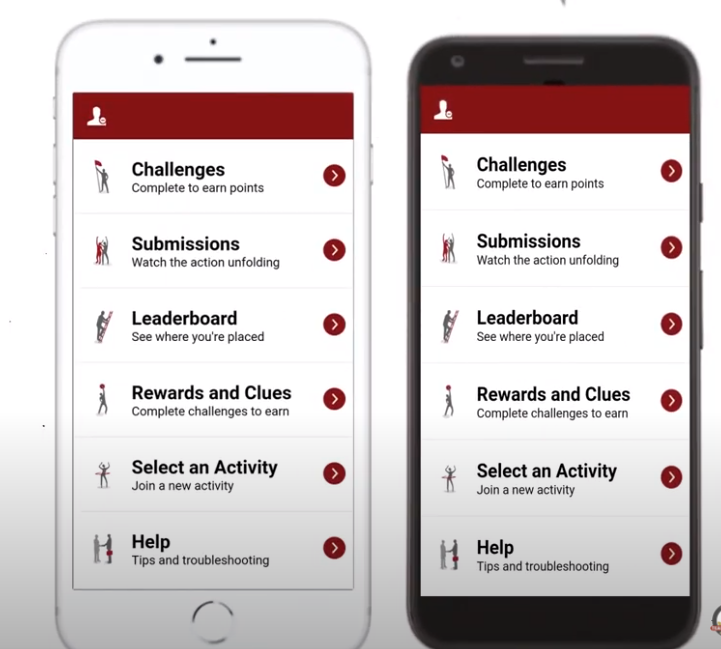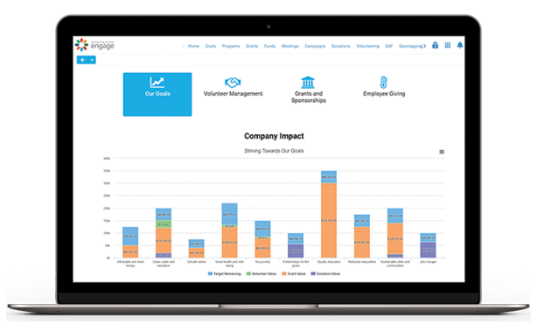Buyers and employees care about your brand’s values and purpose. Moreover, professional partnerships and influencer relationships depend on the proper alignment of each individual’s mission.
In short, business philanthropy can positively impact people’s experiences with your brand, which is why many companies publicly support charities. Learn how your philanthropic strategy affects your business, then take steps to build charitable giving into your culture.
Overview: What is business philanthropy?
Business or corporate philanthropy is when companies donate time or money to a charitable organization. It may be a company-wide effort or the work of a CEO philanthropist.
Examples of business philanthropy include pro bono work, group volunteer activities, and the collection of donations at the workplace. As companies shift toward corporate social responsibility (CSR) goals, philanthropy is one step businesses can take.
To meet CSR objectives, organizations look for ways to support communities, often by increasing donations or fundraising activities. Last year corporate giving grew by 13.4%, according to Giving USA.
Although altruism is noble as an end to itself, many companies take strategic actions to ensure each donation supports their brand’s mission and values.
The 3 benefits of business philanthropy
Of course, the feeling of giving is a strong motivator for corporate donations. However, the benefits of business philanthropy extend further than feel-good moments.
Companies that make charitable work part of their business model build better client relationships, attract more talented employees, and receive positive media attention. A Project ROI study finds that charitable companies using a CSR program can:
• Heighten employee engagement by up to 7.5%
• Increase worker productivity by 13%
• Decrease staff turnover by 50%
• Boost revenue by up to 20%
1. Boost business reputation in the community
Giving back to your local community is a fantastic way to bolster your company’s reputation and become a cornerstone business in your area. Your clients like knowing the dollars they spend get funneled back into helping local charities.
You don’t need flashy or expensive marketing tactics to share your message or brand story. Instead, local bloggers, social media influencers, and charity advocates will return your goodwill by including your origin story or brand mission in their posts and news stories.
2. Increase company revenue
With an improved reputation and visibility in your community, sales naturally follow. However, an increase in revenue also stems from the partnerships you make with charities and other business leaders.
A Cone Communications CSR study finds 87% of Americans “will purchase a product because a company advocated for an issue they cared about, and 76% will refuse to purchase a company’s products or services upon learning it supported an issue contrary to their beliefs.”
By promoting a charity and building awareness for a good cause, you extend your reach and generate interest in your products or services.
3. Attract and keep employees
Having a greater purpose, especially one that aligns with an individual’s values, is a reason for choosing one employer over another. Since 15% of job seekers refuse a job offer due to the company’s culture, according to Jobvite, boosting your culture through philanthropy is an excellent way to differentiate your organization.
Furthermore, once your staff is hired, corporate philanthropy increases engagement and improves employee retention. A TINYpulse study finds that workers are 27% more likely to stay with an organization with goals beyond profit margins.
How to include philanthropy in your business culture
Culture affects every aspect of your business, regardless of your company’s size. Including philanthropy in your culture is more than asking for donations to United Way or the local Boys & Girls Club.
Your strategy should directly connect your mission and values to the causes you support. Use these small business tips to create a culture of giving within your organization.
1. Embrace the pillars of philanthropy
The best way to bring philanthropy into your culture is by tying it to your mission, vision, and values. Emphasize your core values during workforce planning sessions and company meetings. Plus, connect your mission to philanthropy in your employee handbook.
The five pillars of philanthropy include:Inclusion:
Transparency:
Empowerment:
Collaboration:
Celebration:
2. Create a fundraising committee
Pull together the five pillars of philanthropy by developing a committee to oversee your philanthropic efforts. Reach out to all departments to build a team with members from across your organization, including people in management and leadership roles. Committees handle tasks like:
• Identifying potential charities or volunteer work opportunities
• Researching organizations to ensure they align with your company values
• Developing a case for specific causes or activities
• Sharing employee ideas with executives
• Organizing company-wide events
3. Encourage employees to participate in group volunteer activities
Direct involvement gives staff a sense of purpose, resulting in improved productivity and workplace relations. When you tie your organization’s values to specific philanthropic actions, you can excite your team while offering team-building activities.
However, finding projects that a multigenerational workforce will get behind is tough. Your committee can identify inclusive activities that appeal to various team members while ensuring everyone has a voice in the decision. Consider team-oriented efforts such as:
• Sponsored charity walks or runs
• Care package assembly
• Charity scavenger hunts
• Workplace challenges, like a bake-off for charity
• Group volunteer days for local nonprofits

4. Support charitable giving in the workplace
Give your teams the tools and knowledge to explore purpose-driven activities. For example, develop informational assets to assist employee philanthropy, such as:
• A short elevator pitch describing your corporate giving objectives
• Digital templates, including videos and images for social sharing
• Print media, like brochures or handouts, for use outside the workplace
• A platform for sharing photos and charitable experiences
• Regular updates showing the impact of team philanthropy
• Updated stories from fundraising recipients
Providing support also means giving employees time and means to assist the charity of their choice. Some companies offer paid time off for volunteer work, while others allow staff to help select local organizations for charitable giving.
5. Streamline employee donation tracking with software
Make it easy for human resources (HR) to track employee and corporate donations by integrating fundraising tools with your HR software. Doing so helps you:
• Simplify the giving and tracking process for employees
• Share visual progress updates by department, cause, or location
• Track business goals that are relevant to corporate philanthropy
Technology provides the transparency required for a corporate giving program. It can also empower staff to share their wins and partner with team members from various departments to reach shared goals.

6. Take a top-down approach to philanthropy
It’s nearly impossible to develop a philanthropy culture if your executives, leaders, and stakeholders aren’t visible. For an authentic approach to corporate giving, your leadership must embody your brand’s values and mission.
Get your leadership involved by asking them to share stories about what your brand’s mission and corporate charity support means to them. Plus, executives should spearhead top projects and participate in group activities.
Reach your goals with a business philanthropy strategy
The benefits of building philanthropy into your business culture are undeniable. Yet successful initiatives require a plan that connects your business and philanthropy goals. Think about your mission and core values, then outline the steps you’ll take to build corporate giving into your workplace.
The post 6 Ways Your Business Can Embrace Philanthropy appeared first on The blueprint and is written by Jessica Elliott
Original source: The blueprint





